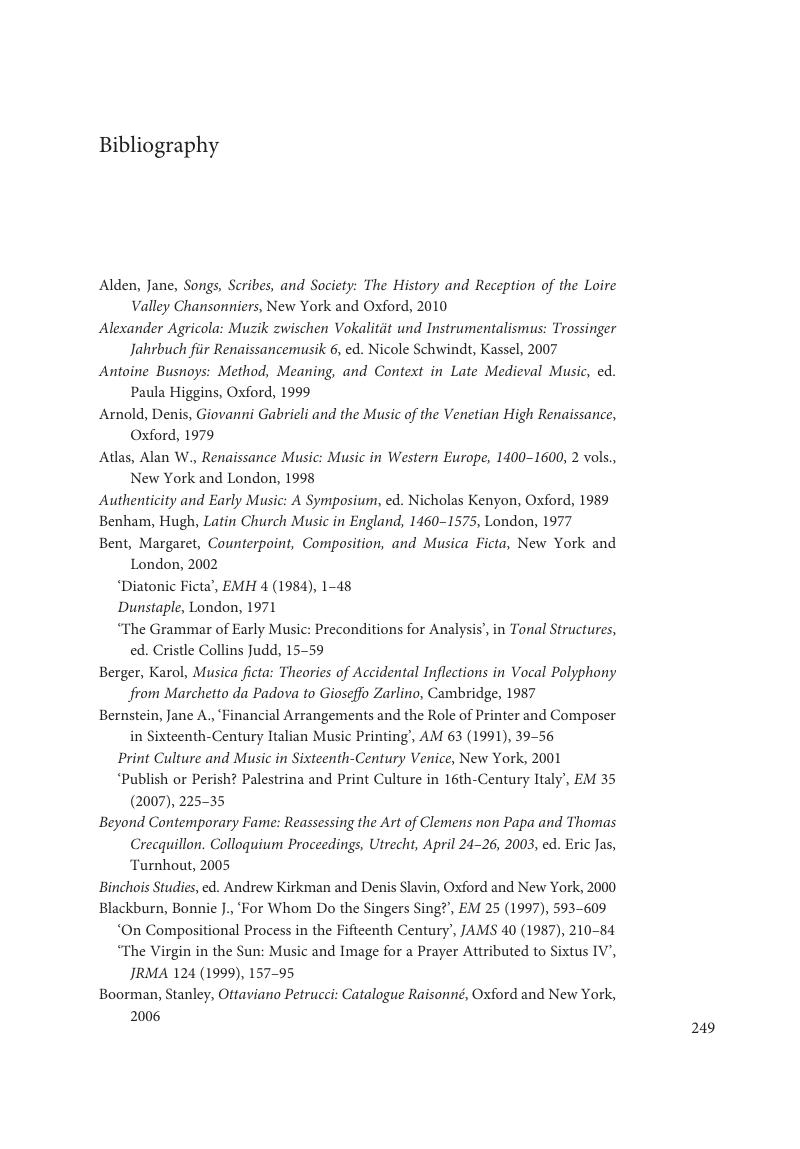Book contents
- Cambridge Introductions to Music
- Cambridge Introductions to Music Renaissance Polyphony
- Copyright page
- Dedication
- Contents
- Illustrations
- Figures
- Tables
- Music examples
- Acknowledgements
- Note on the music examples
- Note on the bibliography
- Abbreviations
- Chapter 1 Introducing Renaissance polyphony
- Chapter 2 Making polyphony: sources and practice
- Chapter 3 Makers of polyphony
- Chapter 4 Pitch: an overview
- Chapter 5 Voice-names, ranges, and functions
- Chapter 6 Mensural notation, duration, and metre
- Chapter 7 Genre, texts, forms
- Chapter 8 ‘Cantus magnus’: music for the Mass
- Chapter 9 ‘Cantus mediocris’: the motet
- Chapter 10 ‘Cantus parvus’: secular music
- Chapter 11 Scoring, texture, scale
- Chapter 12 Understanding musical borrowing
- Chapter 13 Canons, puzzles, games
- Chapter 14 Performance practice: a brief introduction
- Notes
- Glossary
- Bibliography
- Index of compositions
- General index
- Cambridge Introductions to Music
- References
Bibliography
Published online by Cambridge University Press: 13 August 2020
- Cambridge Introductions to Music
- Cambridge Introductions to Music Renaissance Polyphony
- Copyright page
- Dedication
- Contents
- Illustrations
- Figures
- Tables
- Music examples
- Acknowledgements
- Note on the music examples
- Note on the bibliography
- Abbreviations
- Chapter 1 Introducing Renaissance polyphony
- Chapter 2 Making polyphony: sources and practice
- Chapter 3 Makers of polyphony
- Chapter 4 Pitch: an overview
- Chapter 5 Voice-names, ranges, and functions
- Chapter 6 Mensural notation, duration, and metre
- Chapter 7 Genre, texts, forms
- Chapter 8 ‘Cantus magnus’: music for the Mass
- Chapter 9 ‘Cantus mediocris’: the motet
- Chapter 10 ‘Cantus parvus’: secular music
- Chapter 11 Scoring, texture, scale
- Chapter 12 Understanding musical borrowing
- Chapter 13 Canons, puzzles, games
- Chapter 14 Performance practice: a brief introduction
- Notes
- Glossary
- Bibliography
- Index of compositions
- General index
- Cambridge Introductions to Music
- References
Summary

Information
- Type
- Chapter
- Information
- Renaissance Polyphony , pp. 249 - 258Publisher: Cambridge University PressPrint publication year: 2020
